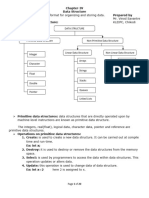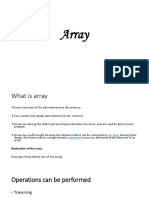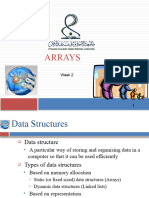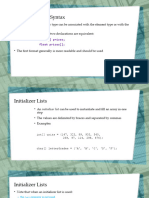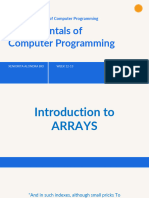0% found this document useful (0 votes)
13 views40 pagesCPS204 Array
The document covers arrays in data structures, detailing one-dimensional and two-dimensional arrays, their declaration, initialization, and processing. It also discusses methods for accessing elements, sorting techniques, and searching algorithms like linear and binary search. Additionally, it includes examples of input handling and operations such as insertion and deletion within arrays.
Uploaded by
jwayeye75Copyright
© © All Rights Reserved
We take content rights seriously. If you suspect this is your content, claim it here.
Available Formats
Download as PPT, PDF, TXT or read online on Scribd
0% found this document useful (0 votes)
13 views40 pagesCPS204 Array
The document covers arrays in data structures, detailing one-dimensional and two-dimensional arrays, their declaration, initialization, and processing. It also discusses methods for accessing elements, sorting techniques, and searching algorithms like linear and binary search. Additionally, it includes examples of input handling and operations such as insertion and deletion within arrays.
Uploaded by
jwayeye75Copyright
© © All Rights Reserved
We take content rights seriously. If you suspect this is your content, claim it here.
Available Formats
Download as PPT, PDF, TXT or read online on Scribd
/ 40









